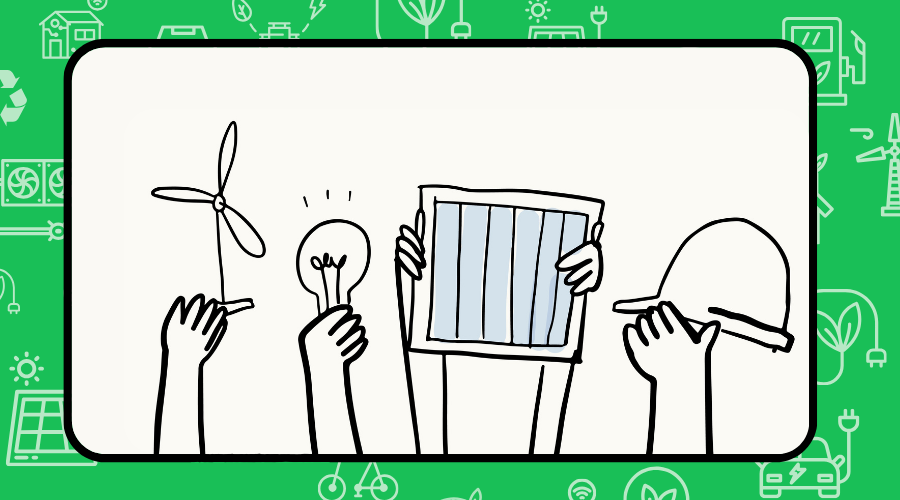
Jobs in the EU’s environmental goods and service sector grew by 23% from 2010 to 2020, compared to just 5% in the wider economy, according to EEA analysis.
But with just 19 % women ICT specialists and 27 % engineers, is the EU accommodating women’s participation in its fastest-growing sector?
Ahead of the International Day of Women and Girls in Science on 11 February, let’s take a closer look at how we can broaden our understanding of green skills beyond STEM (Science, Technology, Engineering, Mathematics).
EIGE’s Gender Equality Index shows that women are interested in working in the green sector. Where women account for 22 % of workers in the conventional energy sector in the EU. And, globally, women represent a little under one-third (32 %) of the workforce in the renewable energy sector.
Gender definitely plays a role. All the barriers that women face in the mainstream workforce are there, such as childcare responsibilities, and progression in male-dominated industries.
And EIGE’s research highlights that there will be around 29 million jobs in renewable energy by 2050. Yet the gender gap in pay and opportunities in those roles remains challenging.
The green revolution is accompanied by rising interest in new ways of working, such as the circular economy: a model of production and consumption that helps keep waste and pollution to a minimum.
But it also leads many without deep technical expertise to worry that the environmental revolution will leave them behind.
Here one leading expert explains why we need to break the barriers to women’s participation. And she makes the case for widening our definition of green skills to involve more people in sustainable ways of working.
“There will be different skills. But a skill is only as green as its application,” says Esther Goodwin Brown, of the Circle Economy Foundation.
“Many skills applied in the context of a business involved in green activities can be classed as green. The combination of skills required is more important than labelling them green."
“There are specific, technical skills, but there are also interpersonal skills, problem-solving and digital skills. And this is in line with trends towards the future of work.”
The Circle Economy Foundation has an established framework to define jobs that contribute to greening economies and industries clearly and, as a result, better understand their benefit to the economy as a whole.
Increasing the quality of jobs in the circular economy also means increasing the inclusiveness of those jobs for women and other groups.
"From our work in cities, the question that kept on coming back was: How will this impact local jobs? We needed a good answer to this,” says Esther.
“Core circular economy jobs are directly involved in repair, the production of renewable energy or resource management. The archetypal circular jobs you see in stock images."
“These provide services to the core that help to accelerate, upscale or enable the process. That could be tech, procurement, or education."
“I like this definition because it looks beyond a few key sectors… People need to think of the circular economy as beyond waste management."
“The circular economy generates jobs across sectors at different skill levels. There's a lot of diversity in the types of roles.”
EIGE’s Gender Equality Index also explores how jobs in care, health and education should also be the focus of a just transition, as they are green (low emission) by default. And if we want to build climate-resilient societies, what our national adaptation plans are all about, the goal cannot be achieved without ‘greening’ health, education and care sectors.
Esther launched the Circular Jobs Initiative to focus on the impact on social justice of the rising demand for green skills and jobs.
The circular economy generates jobs across sectors at different skill levels. There's a lot of diversity in the types of roles.
“My interest has always been in how people transition across different stages of their lives. Be that at school or in the workforce,” she says.
“How do people live and work? How does that influence sustainability strategy? My team focuses on live labour issues, whether you're implementing circularity or not."
“Gender definitely plays a role. All the barriers that women face in the mainstream workforce are there, such as childcare responsibilities, and progression in male-dominated industries."
In fact, more than half of women with children under 12 years old spend at least 5 hours per day on childcare, compared to 26 % of men, EIGE’s recent evidence shows.
“It's about breaking down the stigma for women, particularly in technical engineering roles or more manual, practical work. There's a need to increase demand or make those roles more attractive for people across the workforce, including women."
The European Green Deal is not just bringing people along, but it's creating something better than we currently have.
“Increasing the quality of jobs in the circular economy also means increasing the inclusiveness of those jobs for women and other groups.”
“The ethos of the European Green Deal is that no one is left behind. But I think it's more than that,” adds Esther.
“It's not just bringing people along, but it's creating something better than we currently have."
"A labour market in which everyone has an equal chance and access to opportunities.”